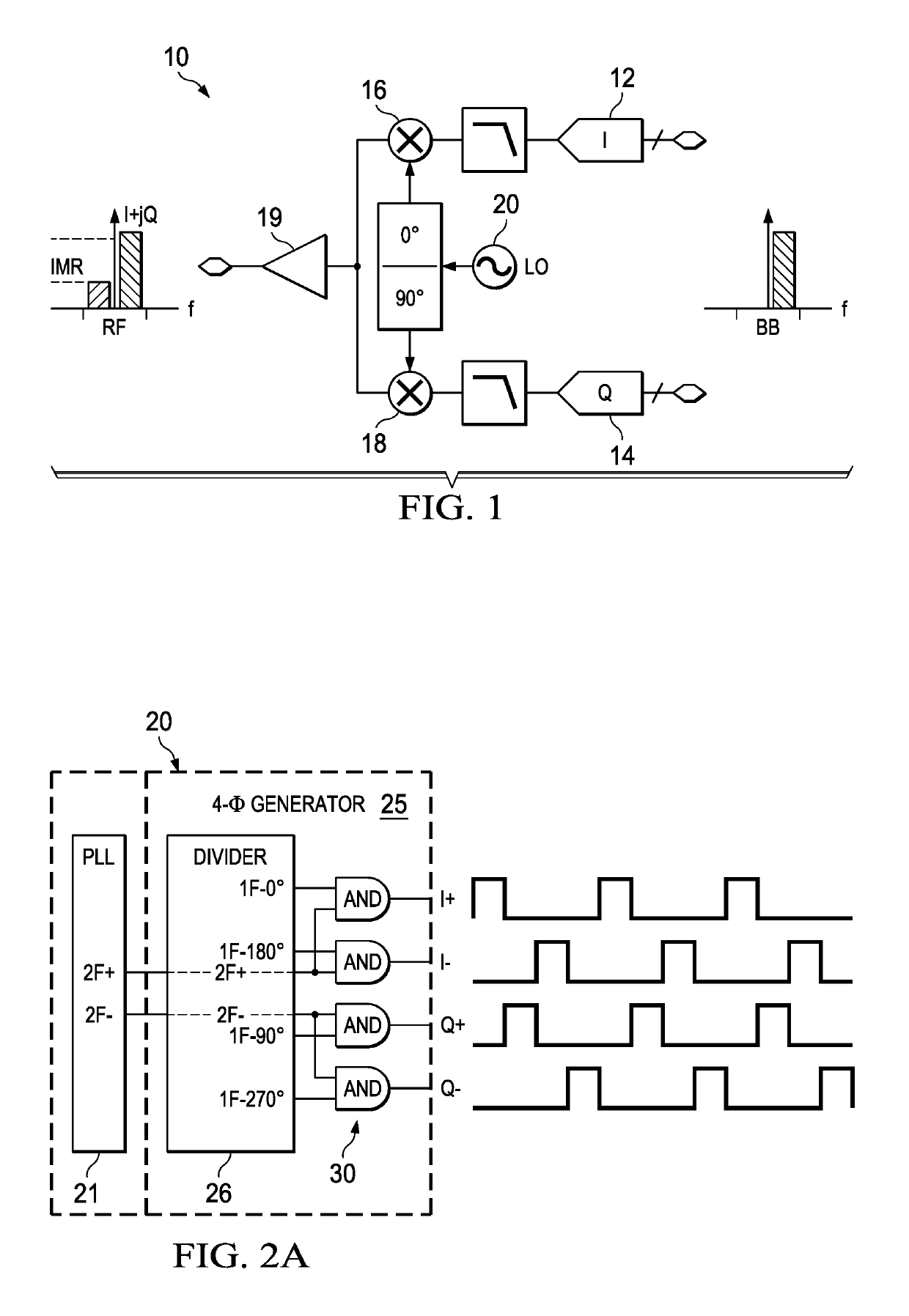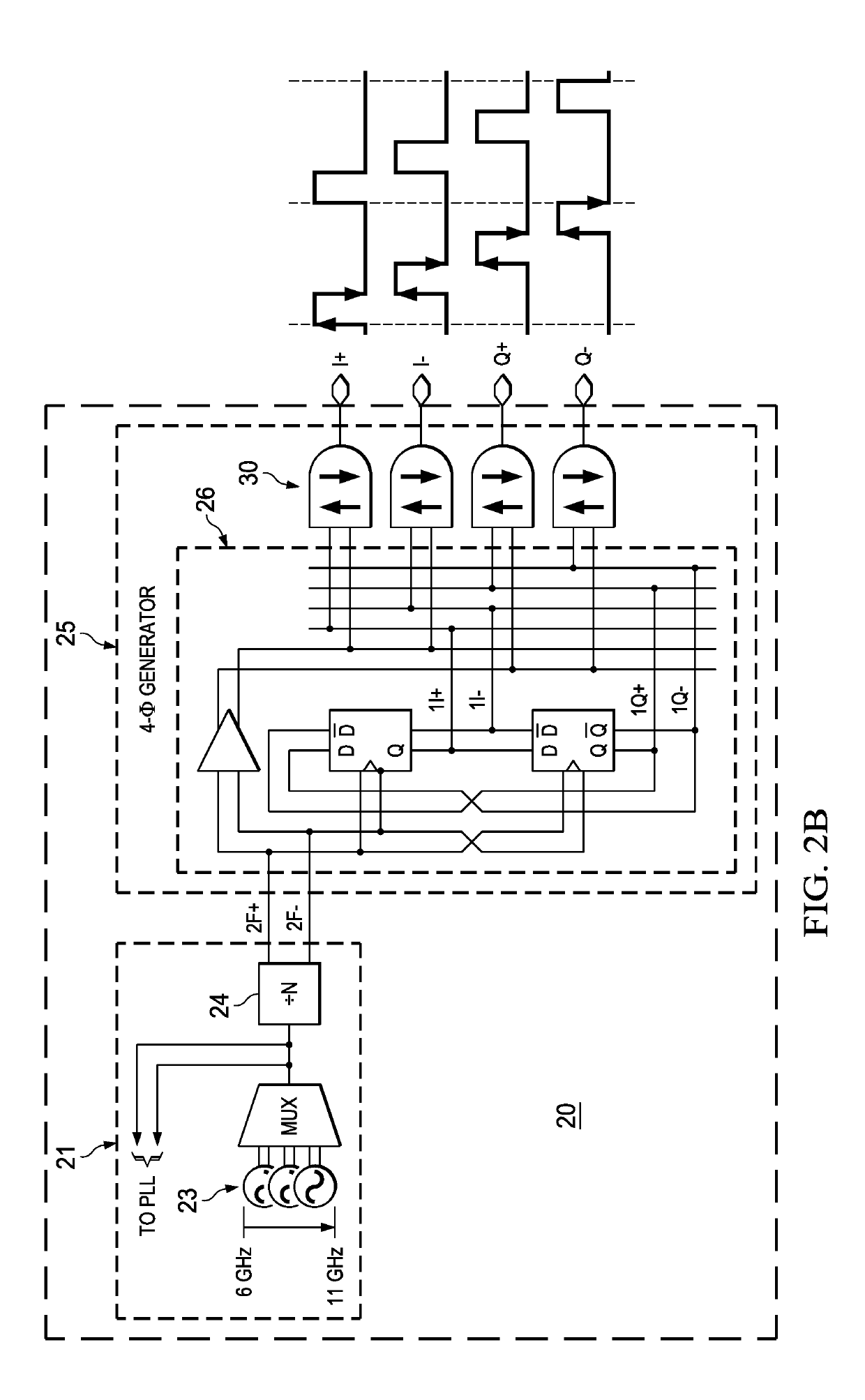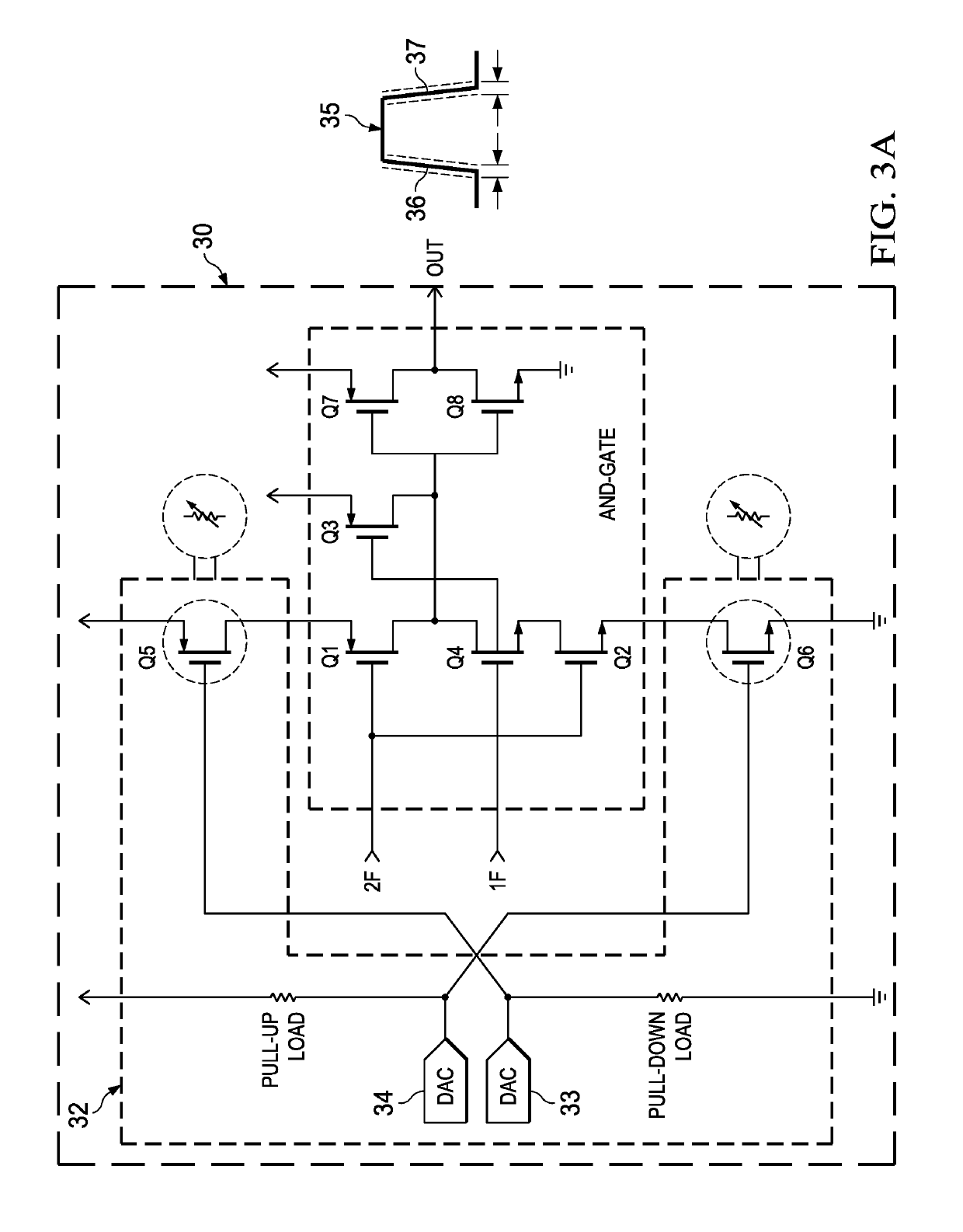Oscillator with pulse-edge tuning
a technology of oscillator and pulse edge, applied in the field of oscillators, can solve problems such as mismatches in amplitude, phase and delay, and achieve the effects of improving accuracy, reducing noise, and improving accuracy
- Summary
- Abstract
- Description
- Claims
- Application Information
AI Technical Summary
Benefits of technology
Problems solved by technology
Method used
Image
Examples
Embodiment Construction
[0017]This Description and the Drawings constitute a Disclosure for an oscillator with pulse-edge tuning, including describing example embodiments, and illustrating various technical features and advantages. An example application is for implementing a local oscillator (LO) design for direct conversion RF TX / RX transceiver systems with LO-driven upconversion / downconversion in the transmit / receive signal chains.
[0018]In brief overview an oscillator architecture with pulse-edge tuning. The oscillator includes a signal generator generating at least two signal frequencies, and a logic circuit (such as an AND gate) that combines the signal frequencies to generate a corresponding oscillator signal. The logic circuit includes a pull-up PMOS transistor coupled to a high rail, and a pull-down NMOS transistor coupled to a low rail. Duty cycle tuning / correction circuitry includes high and low side tuning FETs: a high-side tuning PMOS transistor is coupled between the high rail and a source ter...
PUM
 Login to View More
Login to View More Abstract
Description
Claims
Application Information
 Login to View More
Login to View More - R&D
- Intellectual Property
- Life Sciences
- Materials
- Tech Scout
- Unparalleled Data Quality
- Higher Quality Content
- 60% Fewer Hallucinations
Browse by: Latest US Patents, China's latest patents, Technical Efficacy Thesaurus, Application Domain, Technology Topic, Popular Technical Reports.
© 2025 PatSnap. All rights reserved.Legal|Privacy policy|Modern Slavery Act Transparency Statement|Sitemap|About US| Contact US: help@patsnap.com



